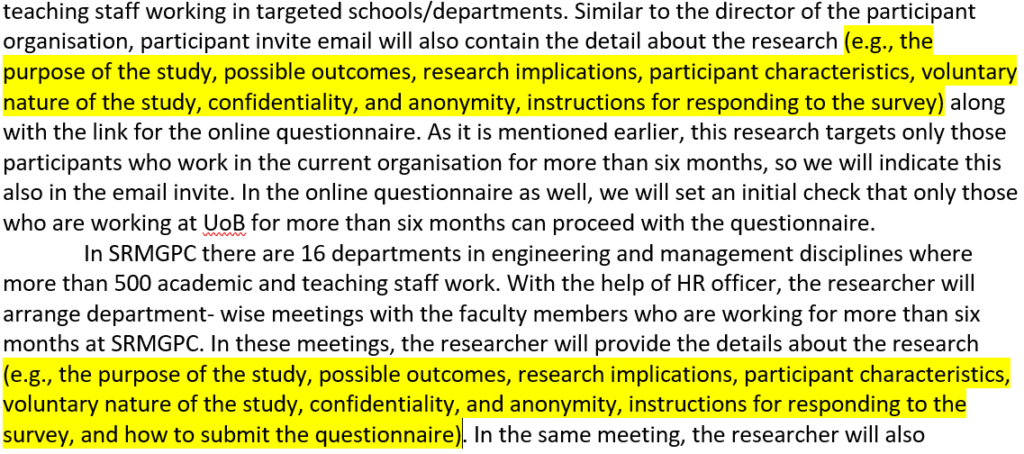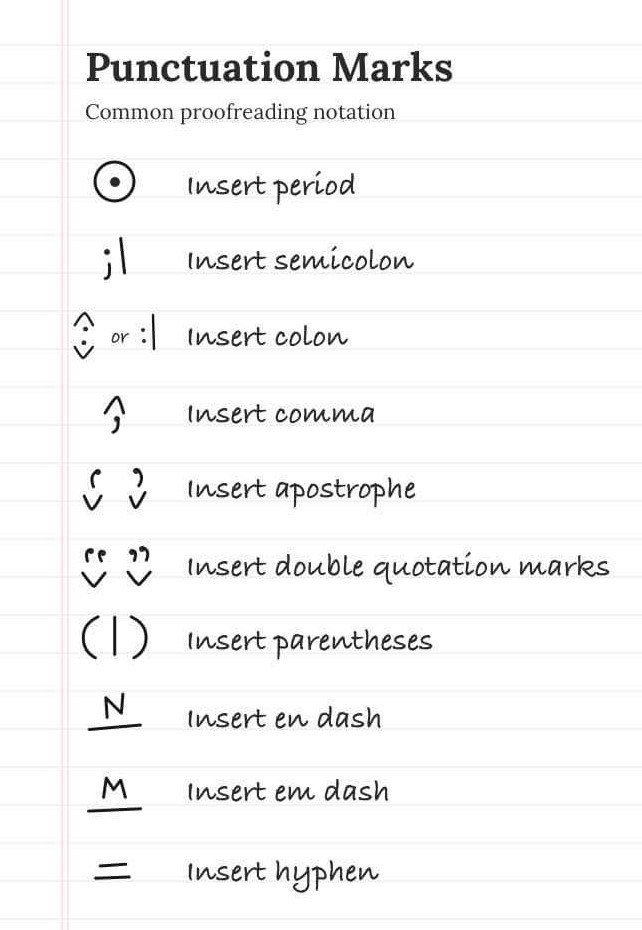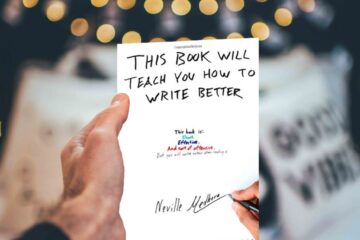.
Wonder, How better editors or proofreaders evaluate an article to make it error-free?
Proofreading is one of the lucrative jobs, requiring no prior degree. Also, the estimated 4.25% annual rise in proofreading jobs, the career looks promising.
In this guide you’ll learn:
1. Exact 8-Step Proofreading formula I use,
2. Free tools to make the task easy,
3. Hacks to boost productivity.
So, let’s dive deep into!

.
A little about my proofreading journey.
Till now, I’ve proofread seven Academic journals for two international university doctorates.
And trust me, it has little to do with experience. It’s the right strategy and knowing the proofreading definition well.
Content Snap
What Exactly Proofreading means?
Scribbr said this aptly, “a process of reviewing the final draft of a piece of writing to ensure the “consistency” and “accuracy” wrt. grammar, spelling, punctuation, and formatting”.
.
Mostly I’ve seen freelancers performing ‘copy editing’ instead of ‘proofreading’.
E.g., They rephrase the entire sentence to their understanding. That’s over-exercising the discretionary powers and benefiting none.
Rephrasing destroys the author’s original tone. Also, a line is written to have a certain impact. Rephrasing it, the impact extinguishes.
More on this later; and how to preserve the originality… so, scroll further.
.
First, let me share free proofreading tools. They are the helping hands in my proofreading tasks. And surely, you’ll find them helpful too!
.
Using Free Online Proofreading Tool
No 10 tools, just two.
1. Google Docs
2. Grammarly (Free version)
With Grammarly, I mean judicial use. I’ll tell you more on that later.
Regarding writing software, I prefer Microsoft Word.
For proofreading in MS Word / Gdocs,
track changes >> Review Tab.
Now, you can compare the edits done with the original work. And the same edits can be viewed by your client.
More helpful features of MS Word to discuss. So, scroll further.
.
Step-wise Proofreading Strategies
.
Step 1: Just read the doc.
Timing – your first time reading
The crucial part is to skip the thought about picking mistakes. Read it like a newspaper. Keep yourself away from intervention of tool.
Figure out what the author is conveying.
Proofreading TIP – Your job is to keep the author’s tone alive. If he prefers using ‘Moreover’ then use ‘Moreover’. Don’t replace it with ‘Also’ or ‘Adding further’.
When you’re going by this way, you’ll notice few flaws:
Error 1 – Voice loss in the context.
To spot that, read the first and last words in the sentence. And then read the sentence as a whole. If it doesn’t sound well, you have to edit that part.
Proofreaders use proofreading marks to highlight those areas (more on this later).
Error 2 – Inconsistent font.
Fonts used should be consistent. And remember, NO editor is bothered about the font consistency. That’s the proofreader’s task. Example:

The former link is in italics while the later one is in the regular. So, convert the former one back to regular.
Error 3 – Incorrect page number
Always check the page number is correct (esp. in the journal).
Also, if no page numbering present, then don’t number it by yourself. Leave a comment for the author, telling him to add page number (incase he forgotten).
.
Step 2: Start detecting the common Proofreading errors
Time: In your second reading.
You got the instinct that how the author writes. It’s time to scrutinize the article. And since you’ve read it once, you would be more confident with the edits.😊
Common Proofreading errors you’ll find:
Error 1 – Incorrect word usage.
The reason is we use these words so frequently, we lose their exact meaning.
Famous Example – affect Vs effect, specially Vs especially, common Vs ordinary.
Sometimes author uses an absurd word… which has no English meaning.
E.g., once my client used “power difference societies” but the correct wording is “power distance societies”.
It can also be confusing words. Like, once my client used “guest house” instead “guesthouse”.
.
Now, it may sound a too professional skill to detect right words…
But it isn’t. Whenever I’m confused with the word usage, I search on GOOGLE. Refer sentences using that word to its exact usage. And also, the experience helps.
Proofreading TIP – You can use Quora. Read the relevant questions to know the exact word usage.
Error 2 – Not capitalizing the proper nouns.
For this, You must be clear with definition of proper nouns.
But if not, a simple Google search… typing the word will tell you that the word needs to be capitalized or not.
E.g. Great Recession is a famous case study. So, it should be capitalized.
Proofreading TIP – a sign of good proofreading is leave comments about your edits. It helps you in justifying the work and builds a good rapport with the client.
Error 3 – Undefined Acronyms

Keep a check that all acronyms are fully defined in-text when they are first-time introduced. And well enclosed within the parenthesis.
Once it is defined, it is not needed to define it again.
Although Scribbr suggests, if you use the acronym after a long gap in bulky research work, it is advisable to define it again. Done for the ease of the reader than any rule. Moreover, it’s on a proofreader wisdom, define the acronym again or not.
Error 4 – Outdated abbreviation List
Trust me, this is the most common proofreading error. According to Intelligent editing, only 2% of articles have an updated abbreviation list. I hope you got the importance.
Proofreading TIP – Not a proofreader’s task to make the abbreviation list; author will do it. Proofreader will leave a comment, what abbreviations author missed, to include the same.
Error 5 – Using contraction in the Academic Journal
Academic writing is a formal writing piece. So, usage of don’t, can’t, couldn’t, shouldn’t be replaced by do not, cannot, and so forth.
PS – I want my readers to get things quick and crisp. So, I used contraction while writing this blog.🤗
Error 6 – To check the punctuations in the Bullet.
Nowadays academic articles are written in bullet points. They are easier to read but have a set of punctuation rules to follow.
Let’s see
Bullets are used for two cases.
1. Listicles
Understand with an example:
(Wondering, how I designed it… I used Photoshop for that. Yups! I’m a graphic designer too).
Fun Part: To know about design principles, read custom youtube thumbnail guide.
Moving on!
2. Sentences are written in bullets.
Then either it should end with ‘.’ (period) or ‘;’ (semicolon) at the end of every sentence. Any other symbol should be omitted.
Error 7 – Incorrect author’s name and facts cited
In academic writing, authors take different researchers’ name in proving their claim. Now, you have to Google every name cited, verifying it’s correctly spelt.
And same with Facts.
Here’s the example:

And just leave a comment, author will do the requisite. I know I’ve said leaving comments before… but it bears repetition.
Error 8 – Incorrect style of Headings & Title.
This is slightly difficult. So, I always suggest you do it in the end.
“Remember Title is NOT in-text.”
The title is written to evoke curiosity. So, they need not follow every grammar rule.
One rule is mandated: capitalize title’s last word.
.
Apart from these eight mistakes, other common proofreading errors are:
- Block Text
- Hyphenation
- Comma usage
- Oxford comma
- Parenthesis closing
- Removing weaker verbs
- Eliminating Taboo words
- Singular/plural usage of verb
- Correcting the Dangling Modifier
- Period when using an abbreviation
- Usage of semi-colon, colon, and em dash
- Converting Passive to Active voice (minor editing)
- Using the dollar/euro sign in prefix of the fiat value
- Citations not following the style (APA/MLA/Harvard/Chicago)
- Inappropriate Quotations (as per APA/MLA/Harvard/Chicago).
Since, there are so many errors, it is easy to miss out one. For this, proofreaders have a checklist to keep them organized. I’ve talked about it in my 8th step.
PS – In the second you’ve fixed all those errors, a human makes and a proofreads catches it.
It’s time to shift gears, and seek Ai to scrutinize the leftover.
Now, I’ll show errors I catch with help of Grammarly & MS-Doc.
.
Step 3: Using MS-Doc features
Time – within your second reading
Set your Proofreading language in the preferred dialect.
Normally, academic journal proofreading is done in UK, USA or Australia English dialect. Your author/client will tell you at which dialect he wants.
For setting your proofreading language:
Go to Language option in the review tab. There you find “set proofreading language”
Now set the language to the desired dialect.

Error 1 – Rectify the Dialect Deviation
E.g., ‘color Vs colour’, ‘center Vs centre’.
MS does a good job in finding the spots.
Error 2 – Double spacing
I’ve seen authors leaving extra spaces after the line ends. Or mistakenly double spacing between the 3-4 char words.
A simple solution to deal with this.
Type ctrl/cmd + F >> hit the space twice (reflecting double spaces)
MS Word will do find those areas. Remove the extra spaces manually. Don’t automate.
Keep the doc under your control, all the time.
.
Step 4: Using Microsoft Word Voice Assistant
Timing – Third reading.
Reason – You’ve read it twice and familiar what’s written. Now, if you read this again, many mistakes you may skip unknowingly.
The best method I’ve seen is to listen else’s voice. For this, I want you to use speak to text assist. If you haven’t used this before, WATCH this video to get started.
Note – If the speak assist didn’t work, you can troubleshoot here. Trust me, this feature is useful but can be buggy sometimes.
Microsoft Shortcuts
I know there are many short cuts, but again limited with few:
| Short-Cut | Action |
| Double-click on the letter | Selects the word |
| Triple-click on the letter | Selects the entire para containing it |
| Ctrl + A/cmd + A | Selects the entire the document |
These techniques help in selecting the desired text. And the Speak Assistant would read that for you.
Sounds Cool, Erh!? Let me know in the comments.
.
Now, Select the entire text by pressing ctrl/cmd + A
Click “speak selected text icon”
Microsoft would read it for you, and as many times you like.
.
With this feature, you can detect these following errors:
Error 1 – Inconsistencies with the Word Usage.
This is a slight time-consuming step but worth it.
In Academic Proofreading, suppose author used the term ‘generous’, now he has to use ‘generous’ (not humble, polite, etc.) to keep the doc consistent. Because switching the word phrases confuses the readers.

Ex. Author used the term ‘bullying prevalence’ then ‘prevalence of bullying’ should be omitted.
Error 2 – Eliminating Redundancy.
Eliminating redundancy is confused with shortening the sentences. This isn’t true!
You cannot rephrase a sentence in proofreading to make it short.
Now, to eliminate redundancy, STEP 1 gets crucial.
I explain you with an example:

As you read out the proofread sentence, its voice is much stronger.
Proofreading TIP 1 – Prefer active voice
Advantages with Active voice –
- It is more confident in tone. So, leaves a lesser chance for the audience to speculate.
- Active voice sentences are shorter in general. And short sentences are always preferred.
Proofreading TIP 2 – using better vocab.
E.g.,
| Normal Word | Sophisticated Word |
| Gets | Receives |
| Hike | Significantly |
| Bad | Negative |
Advantages – improves the professional tone of your copy.
Error 3 – Eliminate repetition
It is important to eliminate repetition. Else encountering similar words/sentences again, confuses the reader. And also, brings a negative impression.
There are two kinds of repetition you need to eliminate.
A) Starting sentence with the same word. Common starting words are Also, Now, This, Moreover, Although, etc.
The hardwork lies in the detection.
I use ctrl/cmd + F and input the starting words. Now, I manually check them where it is going repetitive.
Easy to rectify. Now, replace it with word… better suiting the context.
B) Restating the complete line which is already been said. I show you with an example:

Kindly, observe the highlighted text. You’ll notice, entire lines are repeated.
To replace that, Kristey Wieben, editor at Scribbr, suggests using phrases ‘explained in para 2’ or ‘explained in chapter 4’.
Proofreading TIP – Now, if lines are repeated by the author intentionally to add stress on that point, then it’s fine.
Note – In the above example, the author was discussing the conditions under which the survey was conducted. So, no need to write twice.
.
Step 5: Reading it backwards
Timing – Your fourth revision
This is the most crucial proofreading tip which most editors suggest.
The biggest enemy in proofreading is familiarity. You read multiple times the same text, your brain gets more familiar with it. Hence, stiffs the task of catching the mistakes.
Now, if you read backwards, the brain gets something new to read. Making it easier to catch article errors and typos.
A picture says a thousand words.

You’ll find, reading backwards easier to detect the extra ‘the’ than reading left to right.
.
Step 6: Minimal use of Grammarly in Proofreading
It is always nice to seek a second opinion from an Ai.
What I do with Grammarly?
Error 1 – Article checking
It is common that writers forgot to add an article before the proper noun or adjective they are using.
Example – This is page is filled with article corrections. And with journals I proofread, it’s common.

Proofreading TIP – Double cross-check when you encounter an abbreviation.
Recommended Readings: The Article Usage by Scribbr
Error 2 – Spell check
I’ve seen even after MS Word spell checker, still spelling mistakes are left. So, Grammarly detects that.
.
Step 7: Printing out the article
Time – Probable last time you’re reading the doc
An experiment by the University of Stavanger revealed, “one who reads printed texts retains information better than pdf readers”.
And retaining text helps to eliminate the inconsistencies.
Also, when I have an article printed, I can flip through its pages. This ease my error finding process. Such comfort is not there in the soft copy.
Caution – Make sure you are printing No markup document NOT the original document.
For this, Go to “Review tab” in MS-Word >> track changes >> No Markup.

You’ll find common proofreading errors such as: unclosed parenthesis, mis-positioning the period with double quotes, etc.
Some people use proofreading marks and symbols. They are the handwritten symbols used to highlight the errors. Particularly used when you are reviewing a printed article. The main purpose of proofreading marks to keep a track on the errors detected, hence helping you to stay organized.

Now, you’ve to apply those edits in the word file.
.
Step 8: Reviewing the proofreading checklist
Time – final check
The checklist includes common proofreading errors. I quickly review those areas to make sure everything is fine.
You can call it a repeat of Step 2 at 3x speed.
Steps are done. You now know the effective proofreading process.
But the show is not over yet.
There are some best practices for proofreading. And I want to share it with you. To make it easier, I’ve augmented them into Do’s and Don’ts format.
.
Do’s and Don’ts for a Proofreader
Do’s
1. Taking mild breaks
I take a 5 min walk after every 30 minutes of work. And 30 minutes of music break after 2 hours of work.
2. Work while sipping your coffee
Said to be the writer’s best friend. Medically, coffee increases your metabolic activities by 12%. Therefore, keeps the brain to stay alert while proofreading articles.
3. Highlighting the text
I highlight/flag those areas where I can’t understand what’s written. I communicate the same with my author. After discussing what that part meant, I start working on those areas.
And this brings me to the next point.
4. Maintain good communication with your author
Be it e-mail or text. Remember, it is the author’s work. More than anyone, his satisfaction is the must.
5. Zoom in or changing the fonts
This is a quite standard, but effective approach. Changing the interface brings a new pattern. Hence, easier to detect errors.
6. Re-reading the confusing text 4-5 times
7. Proofread in the silent Atmosphere
8. You don’t create any new problem
Make sure edits, didn’t distort the table of content order or the flow of the text. (Step #1 holds water in proofreading, you see that)
9. Define your work
It is always good to tell your client/author beforehand what you are going to check. This maintains transparency in your working.
.
Don’ts
1. Don’t over edit
the worst you can do with your copy. You are a proofreader who is responsible for minor edits.
2. Don’t hold the document for too long
focus on those areas where you can edit. Communicate with the author to clear the confusion.
3. Proofreading without understanding
If this is the case, refrain from proofreading. Take a break, freshen up your brain.
4. Avoid lengthening the sentences
Lengthy sentences are tough to understand. In the step 4, I told you about removing redundancy. Self-analyze, how you can shrink sentences without rephrasing it.
5. Don’t rush
Rushing with the work; worst you can do with the article. Author has taken out days to write that piece, you can’t unjust to save few hours.
6. Don’t aim for perfection
At the end we all are humans. No copy editor is 100% perfect, likewise No proofreader is 100% perfect. Strive to proofread the copy best from your side.😁
.
Conclusion
Proofreading is an in-demanding skill in 2021. A career which will last long in publishing houses and as freelancing.
Effective proofreading is a skill which has certain process, augmented in steps. In this article, I’ve formulated 8-steps actionable guide to make you a better proofreader.
Alongwith, I shared two free tools: MS Doc & Grammarly. And told how to use and short-cuts to make your task quicker.
Lastly, shared Do’s and Don’ts to improve the efficacy of your proofreading.
Let me know your views in comments.
.
Now, answering some common FAQs.
Frequently Asked Questions
Proofreading is important to ensure the correctness, consistency, and accuracy of the written text. A document of errors, be it academic journal or business email, you lose an opportunity to look professional and polished. In history, a single typo costed millions and embarrassment to the firm. In such scenes, proofreading is an inevitable step.
Proofreader gets the final draft whereas copy editor gets other than final draft. Proofreader is responsible for the spell check, grammar check, consistency check, etc. Editor is responsible for paraphrasing, rephrasing lines, etc. Proofreader is concerned with manuscript and layout errors while editor is concerned with manuscript errors only.
Modern usage is Proofreader. But all are correct, says Mark Cochrane. He states all three spellings are the example of the etymological pattern. First people write “proof reader” then hyphenating it. And finally joining the word to “proofreader”. The same concept holds good for ‘proofreading’ word as well.
A proofreader is responsible for the grammar check, spell check, and eliminating redundancy.
Proofreaders on Quora answers 2000 to 3000 words per hour. But it varies with the proofreader and his experience. It also depends on the difficulty of the document, journal would take longer than an email (of same amount of words).
A good strategy includes having a proofreading checklist. This helps the proofreader to keep their work organized. During the task, proofreaders take short breaks, prefer to work in a peaceful environment, and communicates his doing with the author.






0 Comments